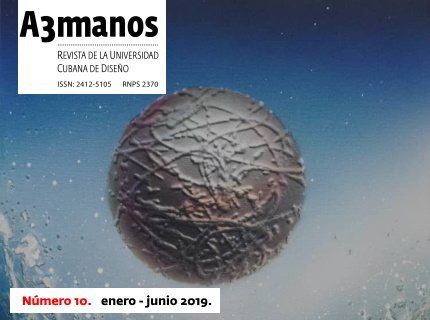The Logical Framework Approach (EML) in the formulation of public policies of design for Ecuador Republic.
##plugins.themes.bootstrap3.article.main##
Abstract
Taking as a public problem the lack of insertion of design1 as a factor of productive, economic, social and cultural development in Ecuador and its social responsibility, the formulation of policies in this sense constitutes one of the main design management strategies for: preservation identity in material heritage, environmental sustainability, productive development, competitiveness, improvement of marketing and image processes, innovation in companies, products, processes and services, among others. On the other hand, poor planning in the formulation of these types of projects2 leads to them not being able to respond to the proposed objectives, goals and users. Consequently, the objective of this research is to show the value of the use of the Logical Framework Approach (EML) as a tool for planning, evaluating and managing social development projects, specifically, policies for Design. For the generation of problems, causes and effects, we worked with data from the Ecuadorian Chamber of Design collected since 2011, specifically the reports of the working groups carried out in the four versions of the International Chrome Meeting, with the participation of the State, the academy, entrepreneurs, users and designers represented in different associations nationwide. The results and conclusions of applying the EML are shown in the statement of four public policies aimed at: promotion and promotion of Design, improvement of productivity, innovation and competitiveness, training in designs; observation, research and design culture.
##plugins.themes.bootstrap3.article.details##

This work is licensed under a Creative Commons Attribution-NonCommercial-ShareAlike 4.0 International License.
- Attribution — You must give appropriate credit , provide a link to the license, and indicate if changes were made . You may do so in any reasonable manner, but not in any way that suggests the licensor endorses you or your use.
- NonCommercial — You may not use the material for commercial purposes .
- No additional restrictions — You may not apply legal terms or technological measures that legally restrict others from doing anything the license permits.
- ShareAlike — If you remix, transform, or build upon the material, you must distribute your contribution under the same license as the original. NOTE: This point applies to numbers 1 to 20 of the magazine with the previous CC-BY-NC-SA 4.0 license. Does not apply to the new CC BY-NC 4.0 license from Volume 11, Number. 21 (2024).
References
Franky, J. (2015). El Acto de Diseñar. En J. Franky, El acto de diseñar... entre otras quijotadas (págs.
-75). Quito: Centro de publicaciones PUCE.
Haugland, C. (2012). El Enfoque de Marco Lógico. Madrid: Catarata.
Mollenhauer, K., & Alejandro, R. (2007). Propuesta de Política Nacional de Diseño. Santiago de Chile.
Obregón, E., Pacheco, J. F., & Prieto, A. (2005). Metodología del marco lógico para la planificación, el seguimiento y evaluación de proyectos y programas. Santiago de Chile: Naciones Unidas CEPAL.
Peña, Sergio; Milvia Pérez. (2015). El objeto de la profesión. A 3 manos, 6-26.
Project Management Institute, I. (2017). GUÍA DE LOS FUNDAMENTOS PARA LA DIRECCIÓN DE PROYECTOS. Atlanta,: PMI Book Service Center.
Sanz, M. (2015). Experiencias internacionales del diseño dentro de las Políticas Públicas. Acto, 75-87. Univesidad Nacioanl de Colombia. (2009). Estructuración del Sistema Nacional de Diseño. Bogotá.: UNIMEDIOS.






















